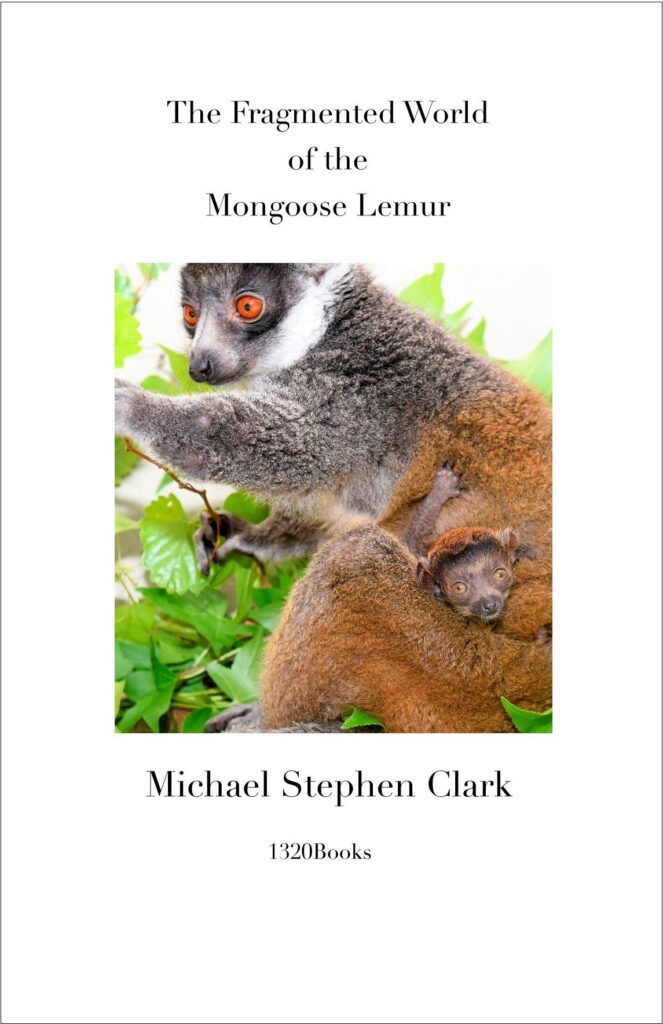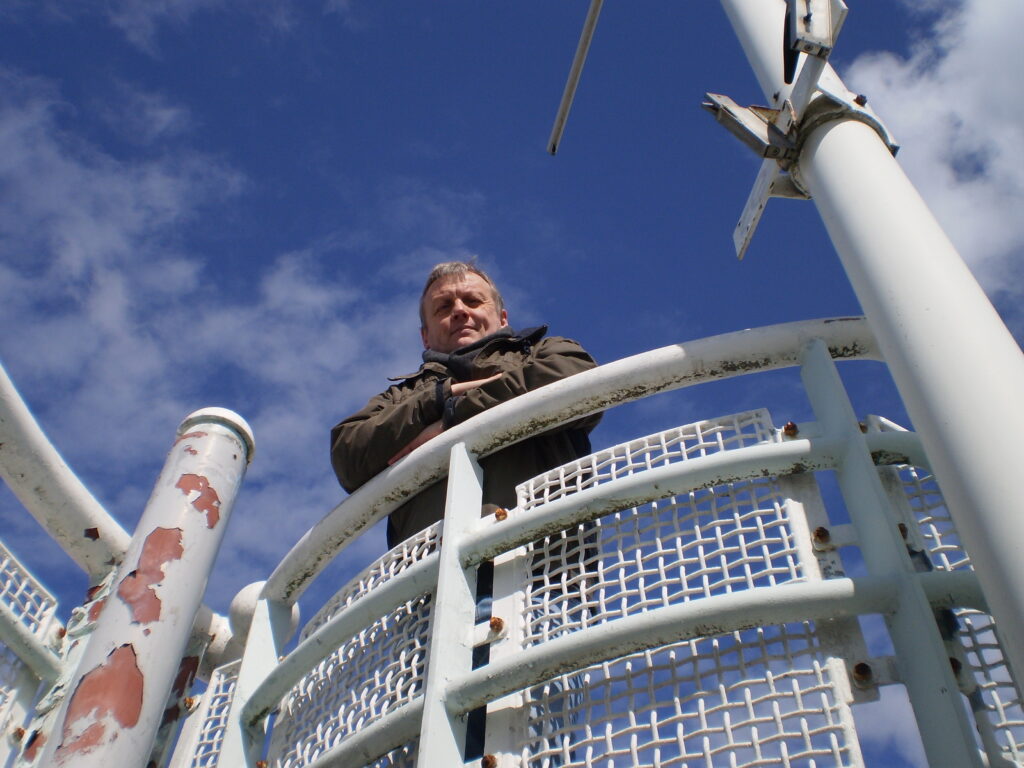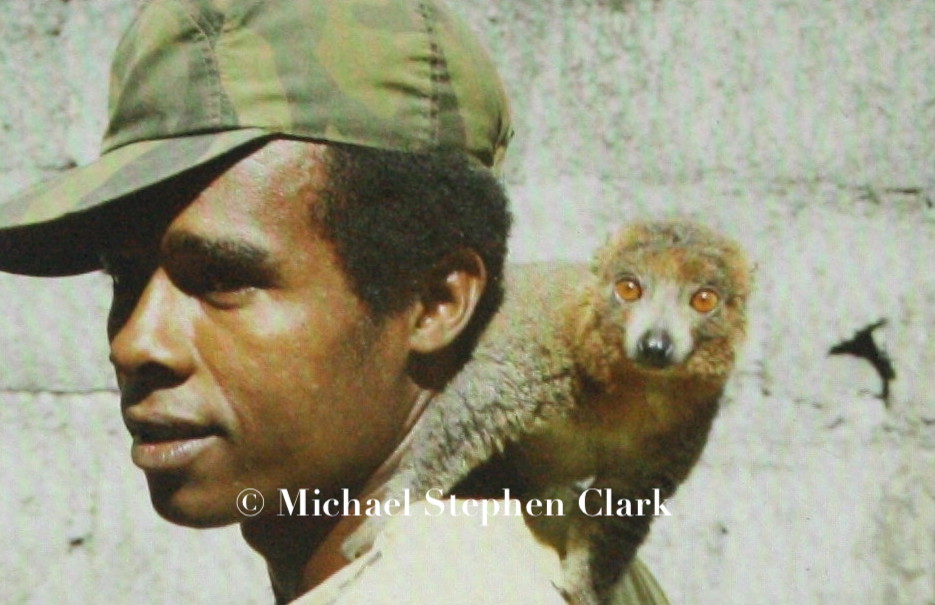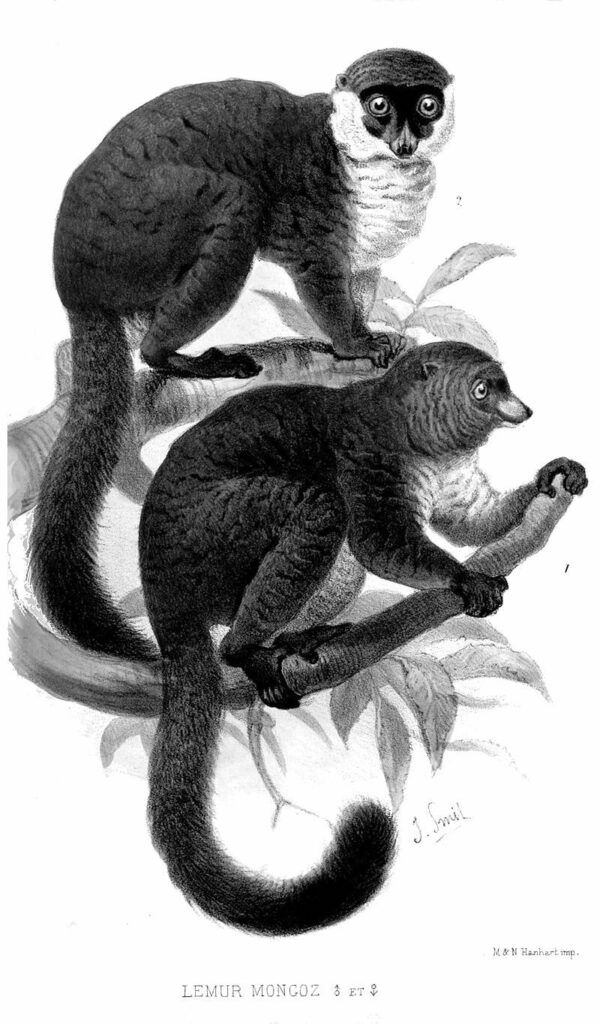 The Fragmented World of the Mongoose Lemur is a book about a critically-endangered species, fractured ecosystems and the global war on nature. It is a compelling story in which author Michael Stephen Clark reveals the fundamental paradox of the mongoose lemur’s natural history.
The Fragmented World of the Mongoose Lemur is a book about a critically-endangered species, fractured ecosystems and the global war on nature. It is a compelling story in which author Michael Stephen Clark reveals the fundamental paradox of the mongoose lemur’s natural history.
In this post we chat to the author of this important and timely book about his work with mongoose lemurs, the problems withthe way that conservation is reported in the mainstream media and his hopes for the future given the alarming loss of biodiversity and rate of extinctions we are currently experiencing.

Your book is described as a modern natural history, but it also conveys a larger message that is of relevance to our relationship with all wild species. Why did you choose the mongoose lemur as your focal species – what is it about this primate that makes it suitable for illustrating more widespread issues?
I first became interested in the mongoose lemur when I worked with an aged and overweight pair at London Zoo in the 1980s and 1990s. They were being kept off-exhibit, which I thought was inappropriate given their endangered status. In due course, we were able to move them into a larger, outdoor enclosure, but only after an operation had been performed on both of them to remove excess adipose tissue. It was all very invasive, but the animals were much fitter, healthier and happier as a result. Shortly afterwards, I discovered that the captive breeding programme for the species lacked co-ordination, so I established the first international studbook for the species in captivity. There wasn’t a great deal of information about them in the literature and relatively few researchers and institutions had sought to remedy that. It quickly became clear to me that the mongoose lemur was fast becoming undervalued and potentially overlooked as an endangered species. I’ve been concerned about them ever since, probably because my sympathies often lie with the ‘underdog’.
I’d long been aware that the mongoose lemur could illustrate very directly the profound disruption caused by human alteration of the natural continuum. Human attitudes to wildlife contain a raft of contradictions that result in contradictory outcomes. This is particularly true of the mongoose lemur. In common with virtually all lemurs, it is a critically endangered species that exists in compromised and/or fragmented habitat in the wild. Perversely, however, it appears (on the surface) to be more numerous and relatively safe as a naturalised alien species on the Comoros Islands of Anjouan and Moheli. Lemurs in captivity are generally viewed as a conservation priority, yet the mongoose lemur ranks lower in importance than some of the more enigmatic lemur species. Already, without digging too deeply, we can see that the mongoose lemur has experienced displacement at every point where it has come into contact with humanity.
Perhaps, more alarmingly, the mongoose lemur has unwittingly become a prima-facie example of something disquieting; namely, a growing acceptance that nature will be allowed to persist only in places of our choosing. It’s a situation that has led to questionable decisions around relocation, translocation, restoration, rewilding, and re-introduction. To my mind, these things invite compromise, not least where species such as ring-necked parakeets in England and mongoose lemurs on Anjouan are inter-changeably considered wild, free-living, native and/or naturalised. These compromises ominously signpost natural systems by human design. Presently, the momentum is behind stand-alone programmes, projects and initiatives that are, of necessity, limited in scale. This may well lead to the ultimate breakup of biodiversity and an end-point where our natural world has become little more than a ‘zoo in the wild’.

Do you think that the way conservation and the plight of endangered species are reported by the mainstream media is problematic? I’m thinking, for example, in terms of how the public, conservationists and governing bodies might go on to perceive the state of the natural world as a result?
I actually think it’s a massive problem for conservation. Once upon a time, the adage was ‘there’s no such thing as bad publicity.’ In recent years, the mainstream media has shifted away from the substantial to the superficial reporting of wildlife conservation matters. Social media and the wider online milieu all feed into that, of course, but far too many stories are either half-told, poorly-told, or just plain misleading. It’s actually worse than not telling the story at all. This is especially disruptive for governing bodies and NGOs that can so easily find themselves painted into a corner by media-generated hubris. I’m not sure that a proliferation of conservation news portals, websites, blogs, podcasts and influencers is useful either. It is more likely that conservation stories will become even more distorted, diluted and diffuse as result.
I think the effect of all this on the public, among conservationists, and within governing bodies is potentially quite dangerous. It could make identifying priorities and taking effective action a minefield of conflicting imperatives. The recurring controversy over the Ramsar site at Coul Links in Scotland is a good example of media hubris threatening not only to drown out voices of reason, but also to trample the letter of the law into the ground. It took the combined firepower of a self-generated media campaign by a coalition of Wildlife Trusts and NGOs to beat back an existential threat to unique (and legally protected) dune habitat. I suspect that such coalitions will have to establish permanent media entities if they are to fight the war on nature across several (media) fronts.

Given the alarming rate of extinctions and global diversity decline, what would you like to see happen, both on a local and an international scale, to begin dealing with this? And would you describe yourself as broadly hopeful or pessimistic about this crisis?
I’m afraid that I am neither optimistic nor pessimistic about the future. I know it’s a cliché, but I think the future is already here. The important decisions now (as ever) will lie with young people, many of whom are not only well-educated and eminently qualified, but savvy as well. I recently rejoined Linkedin after a long absence and the sheer number of extremely active, professional wildlife conservationists around the world is really quite dazzling. In the short-term, issues around job security, personal security, career development, and establishing substantial permanent facilities in the field need to be addressed.
Frankly, I think that’s primarily the top-down responsibility of pan-national institutions such UNEP and the World Bank. The scale of accelerated extinction events forewarns us of a looming biodiversity crisis that could very easily become an existential threat in just a couple of generations. It requires a global response and the money really has to start flowing from global institutions if we are to empower and support our highly motivated international conservation professionals. To my mind, food security, health, climate, biodiversity and species conservation are equal priorities. I don’t understand how this became a hierarchy of aspirational goals because the response they all require is equally urgent.
In the medium term, it is not news to say that we have to invest in future generations, but ‘hope and inspiration’ aren’t enough. I think that young children generally receive a good grounding in natural history in their pre-school and primary school years. With a little support, that can happen in a developing country as easily as it can in the UK. But, young people need to have pathways they can follow in order to learn more. From there, they can gain a rounded understanding of natural history, which would inevitably include an elementary form of conservation biology. I’m a bit surprised that some of the more prominent NGOs aren’t lobbying for this with a draft curriculum. Nature conservation education for school-age children has to graduate from photocopied fact-sheets and elevate itself as the most valuable ‘eco-system service’ available.
 As a zoological professional you have studied and worked in several esteemed organisations including the University of Bristol, London Zoo and Oxford-Brookes University. What do you consider to be the most significant highlights of your career so far?
As a zoological professional you have studied and worked in several esteemed organisations including the University of Bristol, London Zoo and Oxford-Brookes University. What do you consider to be the most significant highlights of your career so far?
Anyone who has ‘hands-on’ experience of working with wild animals in the field and/or captivity will tell you it’s a life full of great highs and lows. It doesn’t do to dwell on the lows so I’ll concentrate on things that I considered achievements. As I explain in my book, the time I spent on Anjouan in the Comoros Islands was a very special career highlight. It was a great privilege to be trusted with the capture and care of Pteropus livingstonii, one of the rarest bat species in the world and, of course, to encounter free-living mongoose lemurs first-hand. I’m especially gratified that several papers, features and articles that I authored or co-authored were published in the course of my work at the Zoological Society of London. These included my account of mongoose lemurs on Anjouan, the jointly written history of black-footed penguins at London Zoo, and a report on breeding Leadbeater’s Possum at London Zoo. Getting up close and personal with urban foxes and badgers in the course of fieldwork for Professor Stephen Harris at Bristol University was memorable, and I very much enjoyed my brief role as a visiting lecturer at Oxford-Brookes University. It was quite an honour to be there at the beginning of the now prestigious Primate Conservation MSc course.
 The Fragmented World of the Mongoose Lemur is, in large part, a species-specific natural history – a format that is perhaps less popular than it has been in previous years and decades. The book was also published independently. How did you find the process of planning, writing and publishing the book and what were the main challenges you faced?
The Fragmented World of the Mongoose Lemur is, in large part, a species-specific natural history – a format that is perhaps less popular than it has been in previous years and decades. The book was also published independently. How did you find the process of planning, writing and publishing the book and what were the main challenges you faced?
It’s correct that the species-specific natural history books have fallen out of favour with mainstream publishers, but I’m not convinced that readers feel the same way. In (apparently) normal circumstances, the life history of a species will appear to be relatively constant. In natural history classics such as David Lack’s ‘Life of the Robin’ and Sarah Churchfield’s ‘Natural History of Shrews’, the subjects live in a self-contained world that is full of challenges, yet seems immutable. The world today, in the age of the Anthropocene, rarely allows for ‘normal circumstances’. Wild animals will live, prosper, suffer, die or become extinct largely at our discretion, which means that their life histories now have to take account of the rapid, ongoing changes wrought by hyper-accelerated, unregulated human activity. That’s why I think it’s valid to revisit species-specific natural history writing and place it in a much wider context.
There was a time when my book would have been titled ‘The Mongoose Lemur in its World’, but that world no longer exists. It more accurately lives in a fragmented world of our making. This is happening to species the world over and those that are able to adjust may live, while those that can’t will surely disappear. We need to understand what makes the difference between the two potential outcomes in order to construct a meaningful response. I think this can emerge from species-specific natural histories that draw from a deeper well of scientific, philosophical and practical resources. I think it’s too often wrongly (and condescendingly) assumed that readers either can’t or won’t respond to stories that cast the net widely and speculate, as I have done, about ‘Propects and Perspectives’.
I’m fairly comfortable now with the process of independent publishing and I’ve never seen it as a poor relation to using an established publishing house. I would describe it as a slow, gentle learning curve rather than a steep and arduous one. The early stages of planning and writing are the most fun, but luckily I quite like editing, proofing and polishing too. I’m quite experienced in that regard but I find that editing your own work means that you really can’t rush it. Familiarity breeds oversight. I usually keep sharing with others to a minimum, but for this book I got a lot of help on specific chapters. I needed it too, and their input was invaluable as the acknowledgements section of the book will attest.
If I had to identify a single challenge that was really testing, I would say that maintaining a consistent, balanced style of writing throughout gave me the most sleepless nights. I wanted to hold the reader’s interest with an engaging narrative but still maintain a firm grip of the factual material. I also wanted the book to be a bit provocative. I always think I’ve read a good book if it leaves me with as many questions as it does answers.
Finally, what is in store for you next? Do you have plans for further publications?
At the moment, I’m doing the preparatory work for events in support of the book. I’ll be using my original colour slide transparencies from Anjouan to illustrate my presentations and I recently bought a very old colour slide projector for that purpose. It’s a bit quirky, I know, but I think it will make things a bit more interesting.
In terms of writing and publishing, I have a couple of things of my own in development, but I’d be interested in collaborating with others to produce further modern natural histories. I’d like to keep the focus on primates, mainly because they’re exposed to lots of different pressures in a variety of situations where they come into close contact with us humans. Their stories challenge us to think about the relationships we have with nature generally and how we are going to rescue biodiversity from our worst excesses. Species such as pygmy slow loris, Cat Ba langurs and Kirk’s red colobus spring to mind, although there are countless others.
Print-on-demand and increasingly accessible typesetting software mean that there are few obstacles to producing books like this. If there is a problem then it is persuading authors to enter a publishing relationship that is unconventional, yet fairer and more equable than the conventional model. Publishing independently also means that your book need never go out of print, something that frustrates many published writers who find themselves out of contract.
The Fragmented World of the Mongoose Lemur by Michael Stephen Clark is available now from NHBS.





